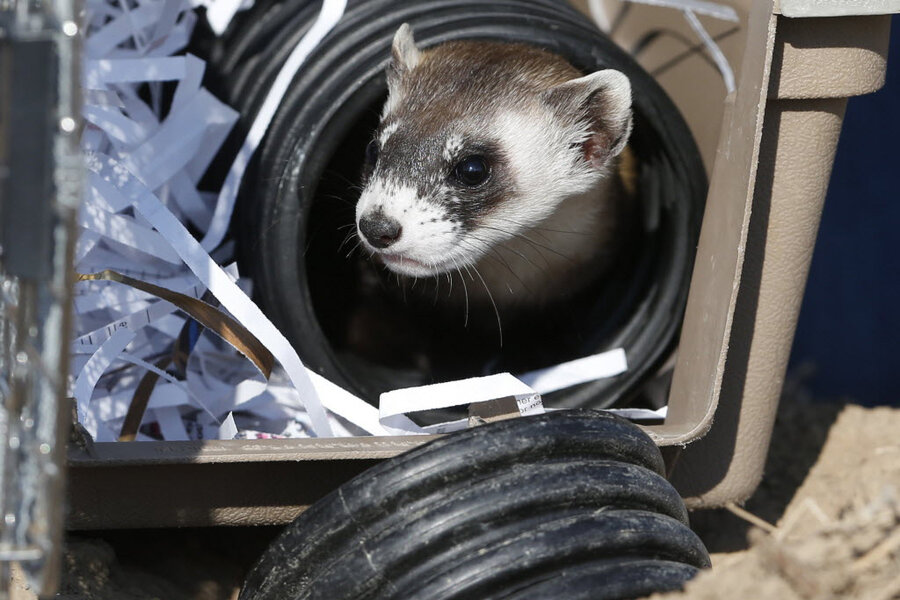Endangered ferrets find unlikely home in former toxic waste site
Loading...
Endangered black-footed ferrets are bringing what animal expert Kimberly Fraser calls their “big bad teeth and bad-boy attitude” to the Rocky Mountain Arsenal National Wildlife Refuge outside Denver, a former chemical plant where conservationists reintroduced the species on Monday.
Scientists hope the cute-but-fierce critters, who were believed extinct before a den was found in Wyoming in 1981, can make as dramatic a turn-around as the land they’ll now inhabit just outside Denver.
“This remarkable place shows that nature will recover and thrive if given a chance,” Fish and Wildlife Service Director Dan Ashe told the Associated Press as he watched 30 of the wriggly creatures explore their new home.
It’s a 25 square-mile prairie that took $2.1 billion to clean up in 2010 after chemical weapons and pesticide manufacturing facilities were dismantled. But the area may have once belonged to these ferrets’ ancestors, whose habitat, in their heyday, spanned the American Midwest from border to border.
Today, a scant 300 live in the wild. But the Black-Footed Ferret Recovery Program aims to bring that number way up, to 3,000, and has already reintroduced ferrets in eight states. The animals are bred in research facilities, then gradually introduced to life outdoors.
Sometimes, the program’s efforts aren’t enough. Success, measured by ferrets’ survival rate, depends on whether they can avoid the same problem that almost doomed them in the first place: finding dinner.
Picky eaters, black-footed ferrets enjoy prairie dogs and little else; the tiny rodents make up 90 percent of the larger mammal’s diet. (According to the American Ferret Association, it’s a common misconception that ferrets themselves are rodents.)
But prairie dogs are threatened by not only environmental loss, but the plague as well. According to the US Fish and Wildlife Service, once the bubonic plague shows up in a colony, there are often no survivors.
Endangered species advocates say that prairie dogs, and countless other species, may be threatened by a recent ruling that the federal government cannot regulate protection for animals found only on private land in one state.
FWS biologist John Hughes told the Coloradoan last year that the discovery of wild ferrets gave his program “a new lease on life,” a gift scientists now try to give to the ferrets themselves.
This report includes material from the Associated Press.






